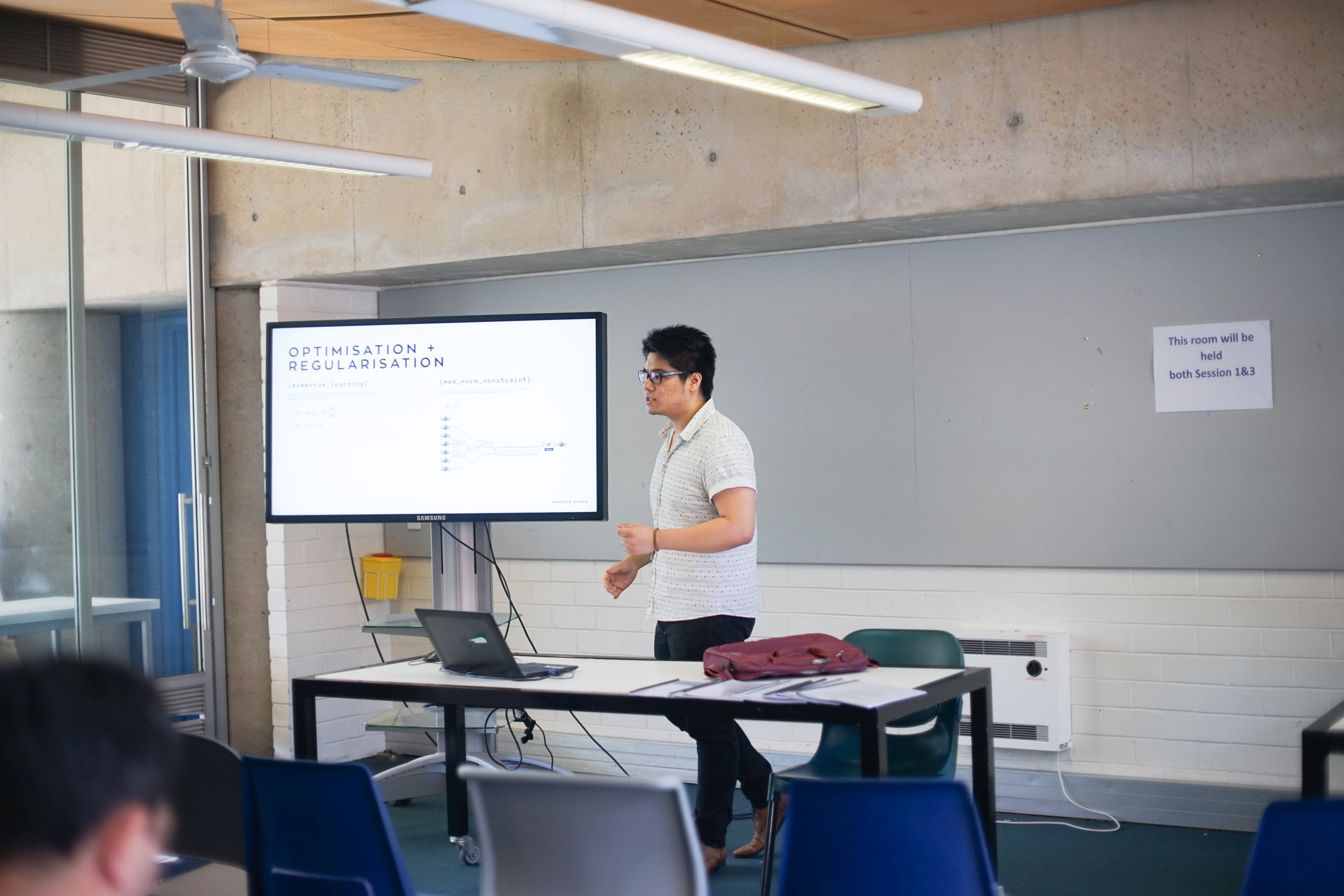End-of-year showcase introduces student’s work to a broader audience
Being embedded with an industry partner has helped Nariddh Khean align his projects with industry needs.
Being embedded with an industry partner has helped Nariddh Khean align his projects with industry needs.

For Nariddh Khean, the end-of-year showcase for the Bachelor of Computational Design set him on an exciting path he could never have anticipated.
After participating in the inaugural Computational Design Research Conference in 2017, he was inspired to pursue a Master of Philosophy at UNSW. During his research into the potential of machine learning integration in computational design caught the eye of engineering firm Arup, with whom he would partner with to provide an insight into the maturity of their machine learning research.
The Faculty of Built Environment Graduation Exhibitions – including the Computational Design Research Conference – celebrate the students' talent and the results of intensive studio or research projects throughout the year. They are also a platform for students to bring their work to life for a broader audience, including industry.
"Our graduation exhibition brings together so many industries and connects them with the students,” Nariddh says. “It's quite professional in that everyone's suited up and all eyes are on you – this is the moment that summarises the last three years of your work, and you're doing it in front of potential employers. There's an air of professional nervousness, but there's also an excitement that you've accomplished something that you've put your heart and soul into – something you are proud of."
To develop their final projects, third-year undergraduate students from Computational Design are embedded with an industry partner. Nariddh was able to pursue his interest in machine learning in architecture consultancy Architectus to develop his research thesis in line with industry needs.

"I think it's important to understand the balance between the needs of us as researchers in the field, and what is practical for the industry," he says. “I had a niche interest, so having the freedom in my final year to pursue research I was passionate about – machine learning – that is where I shone."
"At the time, machine learning wasn’t a technology that you would find in the average designer’s toolkit. However, the predictive capabilities of machine learning could prove a valuable tool. This is where working with Architectus comes in – they recognised the potential, and hoped to facilitate a greater presence of artificial intelligence [AI] within architecture."
The alumnus says strong industry links underpin the student experience at UNSW Built Environment.
"The computational design community in Sydney are quite close, and we're exposed to the industry very early on in our degrees. Your tutors are often industry partners, and at times, they help to shape the curriculum, making what we learn valuable and relevant for our future careers.”

Nariddh has taken up an opportunity in Vienna to do a PhD under joint supervision from UNSW and the Austrian Institute of Technology (AIT), to pursue his goal of seeing more machine learning integrated into design and architecture.
"My PhD topic is artificial intelligence in urban planning and design. It is more application-oriented, where I will be developing the tools and software that show how machine learning can be integrated into those fields."
“In the time between the completion of my Masters and the start of my PhD, I’ve been lucky enough to contribute to ongoing computational design research projects, such as the intelligent control of robotic arms on construction sites through reinforcement learning, and semantic segmentation [image classification at a pixel level] of interior spaces from point cloud data,” says Nariddh.
"I'm excited to continue to develop both here, as well as at an institution like the AIT, and hopefully contribute to bringing the two research hubs together to shape the built environment of the future.”
What: 3rd Annual UNSW Computational Design Conference 2019
When: 06 Dec 2019 9:00am to 6:30pm
Where: Red Centre Gallery, UNSW Built Environment
Register for the Conference